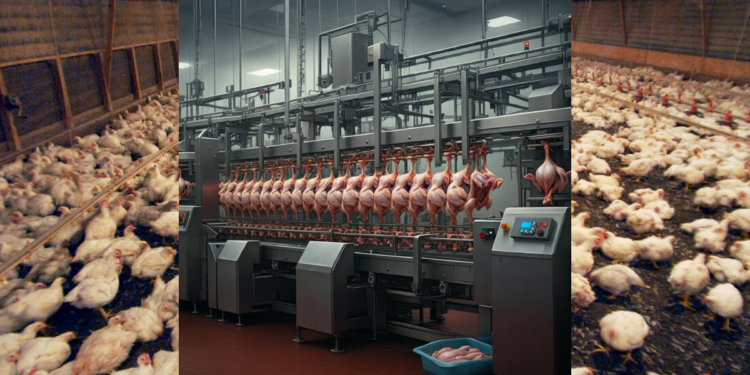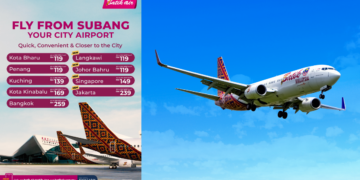In the world of poultry farming, technology is not just transforming how fowl are bred and raised, it is reshaping the entire industry from start to finish. Starting in the 20th century, the introduction of artificial insemination in the poultry world enabled farmers to control and enhance genetic traits in poultry.
This practice has since become a cornerstone of modern poultry breeding, transforming the industry and opening doors to genetic improvements in commercial flocks. With the addition of Artificial Intelligence (AI) and advanced robotics, the industry is now equipped to manage flocks and automate slaughterhouses. These innovations promise not only to boost productivity but also to improve food safety.
How did we get here, and what does this technological revolution mean for the future of poultry farming? Let us explore the fascinating journey from artificial insemination to artificial intelligence.
The Dawn of Artificial Insemination: A Game Changer for Poultry Breeding
Artificial insemination (AI) was first introduced to poultry farming in the 1930s, revolutionizing how fowl were bred. Artificial insemination is widely used in turkey and broiler breeding and has also proven effective in species like Guinea fowl, Japanese quail, emu, and ostrich. In turkey farming, in particular, natural mating became problematic due to the size differences between male and female birds. Artificial insemination offered a way to overcome these challenges, allowing farmers to ensure that only the strongest and healthiest birds reproduced.
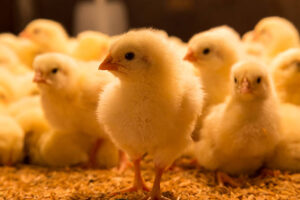
This practice allowed farmers to have complete control over which birds passed on their genes, leading to improvements in traits such as faster growth rates, better egg production, and disease resistance. It is a form of selective breeding that has made the poultry industry more efficient and productive, and it has been instrumental in advancing poultry genetics and improving overall flock health.
However, artificial insemination is labour-intensive and invasive, involving manual collection of semen from roosters and the insemination of hens. This raises ethical concerns about the handling and treatment of animals. Nonetheless, for many commercial breeders, this method remains essential for optimizing production and meeting the ever-growing global demand for poultry.
The Rise of Robotics: From Manual Labor to Machines
Fast forward to the 21st century, and the poultry industry is once again undergoing a technological transformation. This time, through artificial intelligence and robotics. By the 2010s, AI started finding its way into farming, and the poultry sector began embracing automation enthusiastically.
One of the most significant areas where AI is making a difference is in poultry processing. Traditionally, this has been one of the most labour-intensive and dangerous parts of the job. Workers in processing plants, especially those involved in deboning chickens, face long hours of repetitive, high-speed work, which can lead to injuries over time. Enter AI-driven robots.
In 2015, a robot named Gribbot made headlines for its ability to debone chickens with precision and speed. Gribbot performs these tasks far more efficiently than humans, reducing labour costs and minimizing workplace injuries. Today, AI systems can process poultry faster and more accurately, ensuring that the meat is handled in a more hygienic and safe manner.
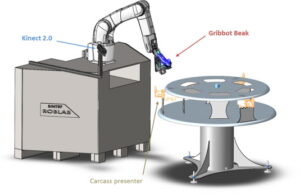
Moreover, AI applications extend beyond the slaughterhouse. AI-driven flock management systems enable farmers to monitor their birds more closely, tracking everything from feeding patterns to health conditions. By predicting potential issues before they arise, these systems allow farmers to take proactive measures, improving overall animal well-being.
AI and Automation in Poultry Processing
One of the more exciting applications of AI in poultry farming is in quality control. AI-driven imaging systems are now being used to detect defects in meat. These systems scan for problems like broken bones, damaged tissue, or other abnormalities that might affect the quality of the final product. AI’s precision and speed can significantly reduce the amount of waste, ensuring that only high-quality meat reaches consumers.
AI is also playing a role in sorting and packaging, automating tasks that once required large teams of human workers. For example, AI systems can sort eggs based on size, quality, and even internal structure, using advanced sensors to detect flaws invisible to the human eye.
As AI and robotics continue to evolve, the poultry industry is increasingly turning to these technologies to solve challenges related to labour shortages, rising production costs, and food safety concerns. AI systems can operate around the clock, ensuring a level of efficiency that humans alone cannot match.
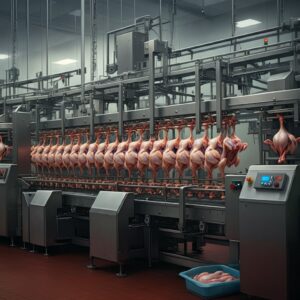
The Challenges and Ethical Considerations
Despite the many advantages AI and robotics offer, their introduction into poultry farming has not been without controversy. One of the most pressing concerns is the potential for job displacement. As AI systems become more capable of handling tasks traditionally done by human labour, workers in poultry processing plants are at risk of losing their jobs. According to a 2024 report by Bloomberg, the rapid automation of chicken deboning has already begun to replace human workers in some facilities.
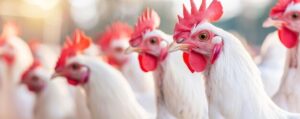
However, proponents argue that AI could also create new opportunities. While manual labour jobs may decrease, there will be an increased demand for workers who can operate, maintain, and troubleshoot these advanced systems. Furthermore, automation has the potential to improve working conditions by eliminating some of the most hazardous jobs in the industry.
Another concern is animal welfare. Just as artificial insemination raised questions about the ethical treatment of animals, the automation of poultry processing can be seen as depersonalizing. Yet, some argue that AI systems could improve animal welfare by minimizing human error and ensuring that animals are handled more consistently and humanely.
The Future of Poultry Farming: Advancing with Technology
As we look to the future, the poultry industry is set to embrace both established and innovative technologies, from artificial insemination to AI and robotics. Artificial insemination, a pivotal tool for improving genetic traits, continues to ensure that future generations of poultry benefit from optimized breeding. Meanwhile, AI and robotics are transforming how poultry is processed, managed, and raised, paving the way for a smarter, safer, and more efficient industry.
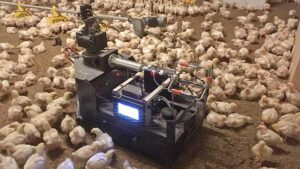
In a world where food security is becoming increasingly important, these technologies offer solutions to many challenges faced by the modern poultry industry. The ability to produce more with less labour, enhance food safety, and ensure more humane treatment of animals are just a few of the benefits that AI and automation bring to the table.
As the industry moves forward, it will be essential to strike a balance between the benefits of increased efficiency and the ethical concerns surrounding labour and animal welfare. As AI continues to evolve, it is crucial for the industry to navigate these issues responsibly and ensure that technology supports and improves human and animal well-being, rather than replacing it.
Watch the video here:
More from Wake Up Singapore:-
M’sian Woman Exposes Abusive Relationship with Narcissistic Ex-Boyfriend
Luca’s owner appeals for witnesses to hit and run at Bartley Viaduct on 23 May 2022 at 10.30pm
If you have a story or a tip-off, email admin@wakeup.sg or get in touch via Whatsapp at 8882 5913.
Since you have made it to the end of the article, follow Wake Up Singapore on Telegram!
Wake Up Singapore is a volunteer-run site that covers alternative views in Singapore. If you want to volunteer with us, sign up here!
If you can, please do consider buying a mug or two to support Wake Up Singapore’s work!



